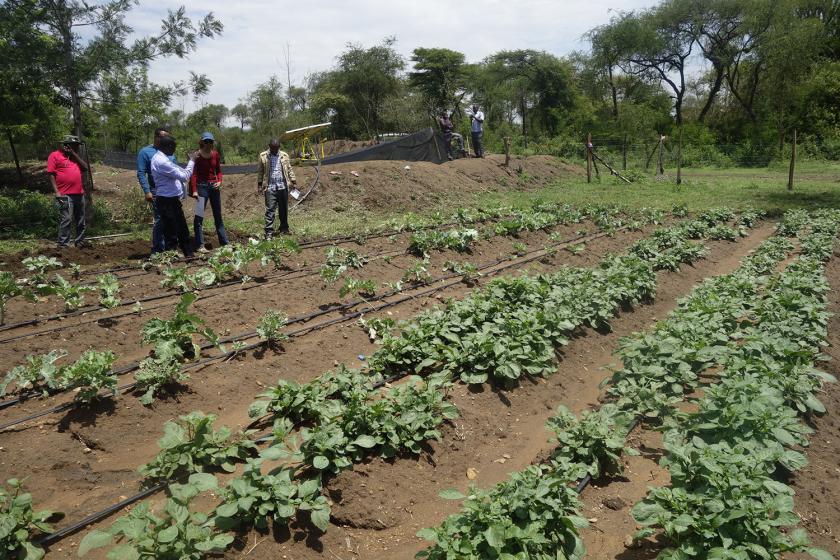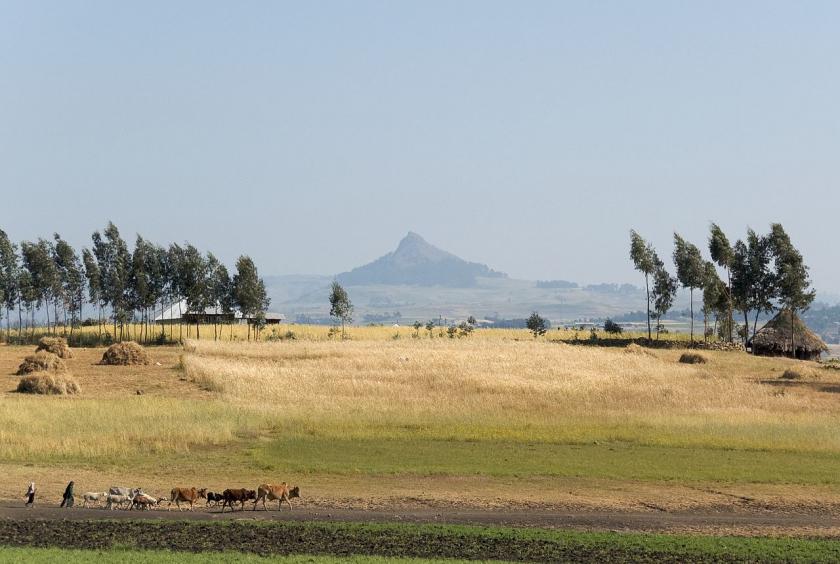
Climate-smart agriculture in Ethiopia. Photo by Flickr, J. Mango/ICRAF.
A new report draws on the climate change mitigation experiences that have valuable experience in developing solutions that can reduce global greenhouse gas emissions and save money in the longer term options for Ethiopia and Kenya.
All these countries are moving towards carbon neutral economies. Finland, for example, aims to be carbon neutral by 2045. However, in their journey along this road to date, they have often had to learn climate change mitigation the hard way – through failures and repeated experiments.
A report launched last week, Nordic Green to Scale for Countries/Africa, sets out how Kenya and Ethiopia can benefit from this experience – as well as the experiences of countries such as Brazil, China, Costa Rica and Germany – to reduce their greenhouse gas emissions by 16 per cent of the projected business as usual emissions by 2030, and chalk up economic and environmental gains along the way.
“The report identifies nine tested ‘win-win’ solutions which, apart from reducing greenhouse gas emissions, can also have significant benefits for people and the environment,” says Tuuli Hietaniemi, a climate specialist with the Finnish Innovation Fund Sitra, the driving force behind the report.
She was speaking at a presentation opened by Joyce Msuya, the Deputy Director-General of UN Environment, underlining the importance of the report to UN Environment’s programme of work.
“UN Environment is working with the Kenyan ministries of agriculture, environment, energy, trade and finance to establish coherent fiscal incentives to promote sustainable agriculture and clean energy among others,” says UN Environment climate specialist Richard Munang.
The report identifies cost-effective climate solutions in the sectors of energy, transport, buildings and households, and agriculture and forests. It projects that savings of US$50 million could be achieved in Kenya in 2030 if the suggested solutions are implemented.
Expanded use of renewable clean energy in Kenya such as wind, solar and geothermal would have co-benefits: it could reduce the need for imported fuels, boost energy security, create jobs, provide new income streams and tax revenue, increase or maintain ecosystem services, and cut air pollution and related health impacts.
“There is tremendous scope for ramping up solar power in Kenya. Currently solar constitutes less than one per cent of the country’s energy mix,” says Mbeo Ogeya, a research fellow at the Stockholm Environment Institute Africa Centre, which collaborated on the report. Wind power offers similar potential.
In the transport sector, the report suggests that investments in walkways and cycle paths can lead to environmental and health benefits as well as cutting greenhouse gas emissions. Greenhouse gases include water vapour, carbon dioxide, methane, nitrous oxide and ozone.
“I don’t own a car and I cycle to work in Helsinki,” says Hietaniemi. “Investment in the right infrastructure, perhaps coupled with financial incentives, can lead to enormous improvements in people’s quality of life,” she adds.

The biggest “win-win” greenhouse gas reductions can be made in afforestation and reforestation, and low-carbon agriculture. Photo by A.Davey.
Increased tree cover – a “win-win” solution
The report identified the biggest “win-win” greenhouse gas reductions in the areas of afforestation and reforestation, and low-carbon agriculture. Kenya already officially aims to have 10 per cent tree cover by 2030, and legislation has been in place since 2009 to ensure that all agricultural land has 10 per cent tree cover, too.
Other solutions identified in the report covered clean cook stoves and energy-efficient buildings.
Scaling up these nine solutions would reduce annual emissions in Kenya and Ethiopia by more than 60 million tons in 2030 – equal to the current annual emissions of Portugal.
“To tackle the climate change crisis, we need to involve everyone and take action together,” says UN Environment climate change specialist Niklas Hagelberg. “Seizing the potential of existing climate solutions and scaling them up in a novel way will help countries meet their current commitments – and go beyond them.”
The Sitra-led project is about scaling up existing solutions, not new technology. However, as participants at the presentation pointed out, the report’s work is highly relevant for the upcoming UN Environment Assembly with its focus on innovative solutions to promote sustainable consumption and production. “The innovation is in the way the solutions are scaled up,” says Hagelberg.
Ahead of the United Nations Environment Assembly next March, UN Environment is urging people to Think Beyond and Live Within. Join the debate on social media using #SolveDifferent to share your stories and see what others are doing to ensure a sustainable future for our planet.
Write comment (0 Comments)
















